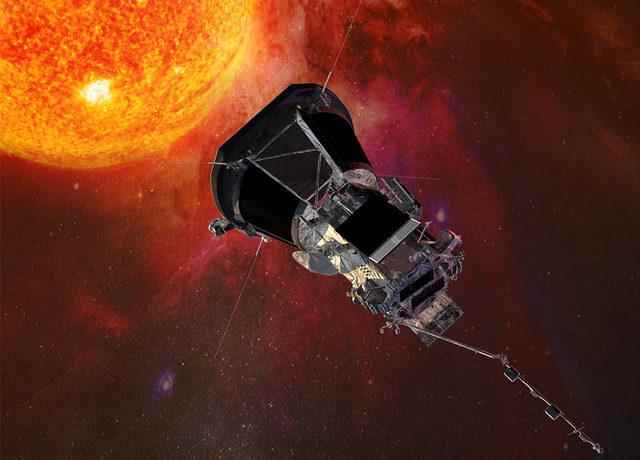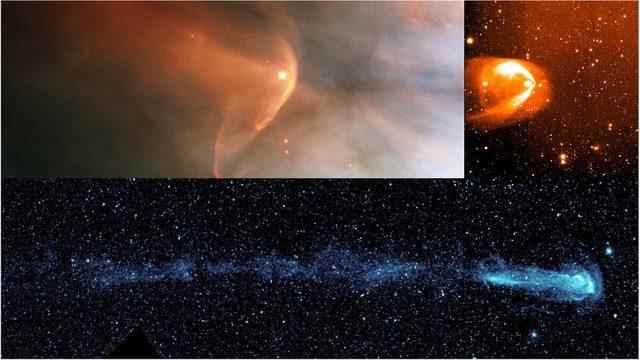Imagine working on a project that you can’t see finished. Would you be willing to work?
“Absolutely,” answers Ralph McNutt of the Johns Hopkins University Applied Physics Lab, or JHU-APL for short, in the USA.
McNutt and his colleagues have published a detailed study of the spacecraft that they envision will make a long journey to interstellar space.
The interstellar region is currently the workspace of NASA’s legendary Voyager spacecraft, but the spacecraft McNutt mentions will travel much farther, much faster, and even 50-100 years after leaving Earth. can continue to work.
“Let’s say it launched in 2036 and completed the projected work in 2086,” McNutt says, “meaning I’ll be 130 at that moment. I’m not going to worry about that. If you want instant gratification, I say don’t go into space exploration.”
Voyager 1 and Voyager 2 vehicles made history in the 2010s by leaving the hot gas region called the heliosphere around the Sun and entering the interstellar medium where the magnetic field, dust and particles created by other stars are dense.
The Voyager spacecraft provided new information about the galactic environment of the Sun, but this was not their main goal.
Voyager voyages were arranged to study the planets Jupiter, Saturn, Neptune and Uranus. This task has been successfully completed.
McNutt’s team wants to change priorities.
“The Voyagers had instruments designed for planet exploration. They didn’t have instruments for understanding processes at the edge of the heliosphere,” says Elena Provornikova of JHU-APL.
The spacecraft they propose will be built entirely for this purpose.
To put it bluntly, this is not a trip to another star.
The closest star systems are not within the reach of spacecraft powered by today’s technology.
However, the spacecraft proposed by the team will be able to stay in the space between the stars for a long time.
The basic concept of this new research, initiated at the request of NASA’s heliophysics department, is an 850 kg spacecraft equipped with instruments to measure charged and neutral particles, magnetic fields and dust.
The vehicle will launch around 2036 and will orbit the Moon in just 6.5 hours.
It will reach Jupiter in seven months, reaching a speed at which it will travel more than a billion kilometers each year.
The longevity of the vehicle is also important.
With the next-generation nuclear batteries that NASA is developing, the interstellar spacecraft will be able to continue sending data to Earth for a century.

“Our research revealed the engineering required to take scientists’ dreams and make them come true,” says research team member Alice Cocoros.
“We came to the conclusion that with technologies that don’t require much addition or enhancement, we can achieve all the scientific work we want to do with this mission concept. That’s very exciting.”
If desired, it is possible for the spacecraft to collect information about interesting objects on its path as it leaves the solar system.
But beyond the heliosphere there is already a lot of research to be done.
According to project co-worker Pontus Brandt, the data obtained by the Voyager spacecraft has raised many new questions about the space around the Sun.
Brandt said: “4.6 billion years ago, our solar system started forming a magnetic field that shielded us from all the dust and plasma.

“This interstellar instrument will help us understand not only the current state, but also where we came from, how it has affected evolution, and where we’re going next. Many don’t know, but we are about to emerge from our own interstellar cloud, through which the heliosphere has passed for the last 60,000 years. Into a whole new region. We’re entering.”
Whether or not the approximately $1.6 billion needed for interstellar spacecraft will be allocated depends on how much support the project finds in the United States.
Researchers in the US may prefer this money to be given to projects that address the Sun’s influence near Earth. The Parker spacecraft recently passed through the Sun’s outer atmosphere, for example.
The scientific world has other projects in this regard. China is working on a project it calls the Interstellar Express. Russian-Israeli businessman Yuri Milner has a special project to send tiny stellar particles towards the nearest star system.
Pontus Brandt said, “There are two things that inspire people. One, of course, is to boldly go where no one has gone before, and the other is the beauty of your long journey for future generations. Because ultimately, space travel will take us there. “We are doing this for future generations.”
